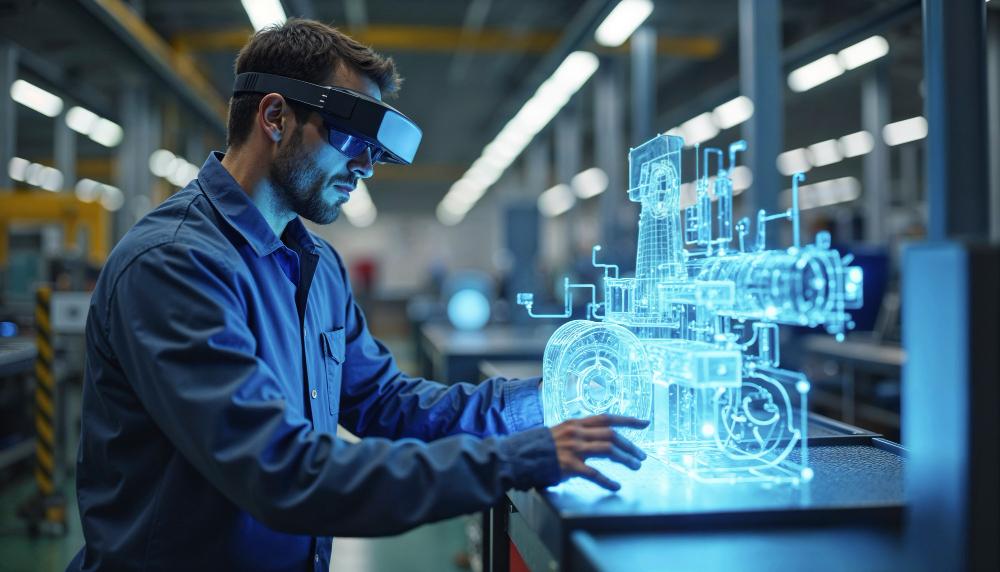Virtual Reality for Predictive Maintenance in Industrial Plants

Industrial plants operate in high-performance environments where equipment downtime can result in significant financial losses and safety concerns. Predictive maintenance, a proactive approach using data and technology to anticipate equipment failures, has emerged as a vital tool for reducing unplanned outages and optimizing operational efficiency.
As industries embrace smarter systems, advanced virtual reality in manufacturing is taking predictive maintenance to the next level. By simulating real-time equipment conditions and visualizing complex data patterns, VR enhances the way technicians monitor, assess, and maintain critical assets. It brings a more interactive and informed approach to preventing failures before they happen.
Enhancing Equipment Diagnostics with VR Visualization
- Real-Time 3D Monitoring
VR platforms integrate with sensor data and IoT systems to provide real-time 3D visualizations of machinery, allowing teams to spot abnormalities before breakdowns occur.
- Visual Layer of Predictive Data
Instead of interpreting raw data, technicians can view thermal maps, vibration alerts, and wear indicators in an immersive format that improves understanding and decision-making.
- Remote Equipment Inspection
Through VR, experts can perform virtual walkthroughs and diagnostics of machines from remote locations, reducing the need for on-site visits.
Training Maintenance Teams for Precision Responses
- Simulated Failure Scenarios
Workers can be trained on simulated breakdowns in a VR environment, preparing them to respond quickly and correctly to early warning signs in real-world settings.
- Familiarization with Machine Behavior
Technicians learn the subtle signs of wear and performance dips by interacting with lifelike equipment models under different conditions.
- Minimizing Human Error
With consistent exposure to maintenance procedures in VR, teams are better equipped to follow protocols and avoid costly mistakes.
Accelerating Maintenance Planning and Workflow
- Interactive Maintenance Forecasting
VR systems support predictive analytics dashboards that show estimated time-to-failure and suggested intervention points, all visualized in an intuitive interface.
- Improved Task Scheduling
Maintenance tasks can be virtually scheduled and rehearsed, helping teams understand task dependencies and reduce downtime during execution.
- Digital Twin Integration
When paired with digital twins, VR enables a synchronized, real-time simulation of actual equipment behavior, offering valuable insights for predictive planning.
Boosting Safety in High-Risk Environments
- Preemptive Hazard Identification
VR simulations help identify potential safety risks before technicians work on-site, reducing exposure to dangerous equipment conditions.
- Virtual Safety Protocol Training
Teams can rehearse lockout/tagout procedures, emergency shutdowns, and confined-space entries in a virtual environment with no physical risk.
- Enhanced Situational Awareness
VR helps workers better visualize their surroundings and understand spatial limitations, improving response times and on-site safety.
Cost and Operational Efficiency Benefits
- Reduced Unplanned Downtime
By predicting failures earlier and training staff more effectively, VR-based predictive maintenance leads to fewer equipment surprises and less production loss.
- Lower Maintenance Costs
Early detection reduces the severity and complexity of repairs, translating into lower costs and better resource allocation.
- Scalable Across Facilities
Once created, VR training modules and predictive maintenance systems can be implemented across multiple industrial sites, ensuring consistent performance.
Conclusion
With the integration of virtual reality in manufacturing, predictive maintenance is evolving from a data-driven concept into a fully interactive and operationally transformative strategy. VR helps industrial plants visualize machine behavior, prepare technicians, and plan maintenance more intelligently—leading to safer environments, reduced downtime, and optimized equipment performance. As industries continue to automate and digitize, VR will remain a key tool in the pursuit of operational excellence.
- Art
- Causes
- Crafts
- Dance
- Drinks
- Film
- Fitness
- Food
- Games
- Gardening
- Health
- Home
- Literature
- Music
- Networking
- Other
- Party
- Religion
- Shopping
- Sports
- Theater
- Wellness


